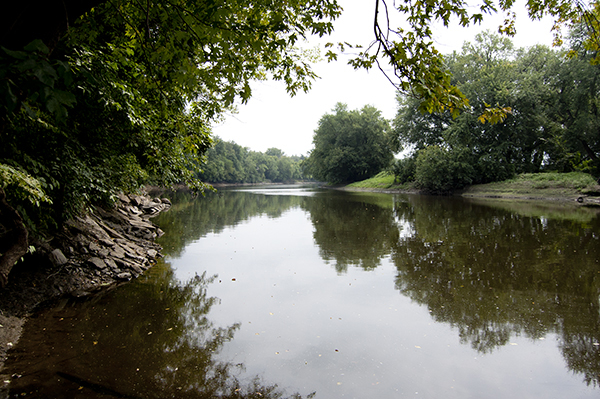

The Wallkill River begins its meandering northward path to the Hudson as a trickling stream draining out of Lake Mohawk in Sussex, NJ. The nearly ninety-mile journey takes it through some of the most fertile farmland in the country as it passes through the Black Dirt region in Orange County, the result of millennia old glacial lake deposits and then on to Ulster County and through our backyards.
However, farms and towns that developed along the banks of the Wallkill River have also contributed to the river’s transformation from a thriving source of fresh fish and center for recreation to today’s Wallkill — a river much in need of cleanup, according to recent tests run by clean water advocacy group Riverkeeper.
Water quality testing conducted over the last year and a half showed that the Wallkill River consistently failed to meet Environmental Protection Agency (EPA) standards for safe swimming, according to Riverkeeper. This was due to the presence of the Enterococcus bacteria, an indication of fecal contamination from sewage.
Every sample taken in June failed federal standards at 21 different sites along 68 miles of the river. Test sites in New Paltz included the boat launches at Plains Road and Springtown Road as well as the Sawmill Brook, part of which flows through the SUNY New Paltz campus.
Data shows that tributaries like the Wallkill tend to have poorer water quality than the Hudson, Riverkeeper Representative Dan Shapely said.
“You would think that they would be cleaner and safer for swimming,” Shapely said.
But even if you avoid dipping your toes in the Wallkill, you may not avoid its bacteria, Shapely said, and contamination via flooding is a concern for local communities.
“Agricultural fields along the river are inundated,” Michael Edelstein, professor of environmental psychology at Ramapo College, said. Edelstein is also the co-president of Orange Environment, a nonprofit environmental advocacy group based in Orange County, NJ.
On Aug. 10, at the height of the late-summer harvest, heavy rains caused the river to swell, submerging The Gardens for Nutrition and its more than 130 plots along the south bank of the Wallkill in the contaminated water, according to the Cornell Cooperative Extension.
“When the garden flooded, all I could think about was that report,” Lisa Weinstein, one of the gardens said one of the garden’s members. “The soil is fertile there, but if the river is polluted, it might not be such a great place.”
The latest testing for contaminants in the gardens’ soil happened after Hurricane Irene, Jaimee Uhlenbrock, president of the board of the Gardens for Nutrition, said.
Uhlenbrock also said that testing results declared the soil safe.
But local gardeners still aren’t so sure.
Alice Velky, a six-year-long member of the Gardens for Nutrition, said she doesn’t feel comfortable harvesting the vegetables from her garden plot for fear of possible contamination. She said she will probably not return to the site next year.
“Every time I go back to my garden, I want to cry because I put so much work into it,” Velky said.
Shapely said Riverkeeper cannot identify specific sources of the pollution based on data they’ve gathered so far. However, evidence suggests excessive storm water during heavy rains causes outdated sewage systems – some built more than 40 years ago – to overflow. The systems are designed to spill excess, untreated sewage water into the river.
Development along the river displaces wetlands and forests that once soaked up excess rainwater. Instead, water runs off pavement and asphalt into sewage pipes of communities nestled along the river, Shapely said. That water eventually makes its way to the Wallkill and leads to flooding.
Edelstein said he believes that the impact of flooding can be reduced by removing impervious surfaces, directing and catching the remaining runoff, restoring trees and landscapes to trap water and restoring wetlands and daylighting streams.
“An enormous amount of water is running off into the river because there’s too much pavement,” Edelstein said.
The Wallkill River Watershed Conservation and Management Plan, created by the Orange and Ulster County Planning Departments in 2007, found that in some areas, surfaces such as pavement and asphalt make up 10 percent of the river’s watershed. If this number continues to grow, the pollution may increase further.
“In a perfect world, every town along the river gets on the ball and cleans it up,” Velsky said.
